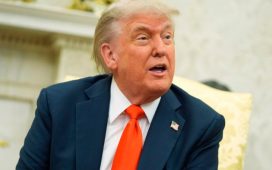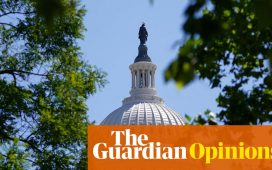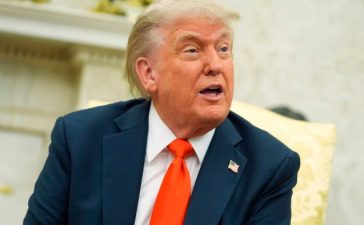
Federal Reserve Chair Jerome Powell has unveiled his latest buzzword to describe monetary policy, with a “recalibration” of policy at a pivotal moment for the central bank.
At his news conference following Wednesday’s open market committee meeting, Powell used variations of the word no fewer than eight times as he sought to explain why the Fed took the unusual step of a half percentage point rate cut absent an obvious economic weakening.
“This recalibration of our policy stance will help maintain the strength of the economy and the labor market, and will continue to enable further progress on inflation as we begin the process of moving forward a more neutral stance,” Powell said.
Financial markets weren’t quite sure what to make of the chair’s messaging in the meeting’s immediate aftermath.
However, asset prices soared Thursday as investors took Powell at his word that the unusually outsized move wasn’t in response to a substantial slowing of the economy. Rather, it was an opportunity to “recalibrate” Fed policy away from a rigid focus on inflation to a broader effort to make sure a recent weakening of the labor market didn’t get out of hand.
The Dow Jones Industrial Average and S&P 500 jumped to new highs in trading Thursday after swinging violently Wednesday.
“Policy had been calibrated for meaningfully higher inflation. With the inflation rate now drifting close to target, the Fed can remove some of that aggressive tightening that they put into place,” said Tom Porcelli, chief U.S. economist at PGIM Fixed Income.
“It really allows him to push this narrative that this easing cycle is not about us being in recession, it is about extending the economic expansion,” he added. “I think it’s a really powerful idea. It’s something we had been hoping that he would do.”
Powell’s buzzwords
Several of Powell’s previous efforts to provide buzzy descriptions of Fed policy or its views on the economy haven’t worked out so well.
In 2018, his characterizations of the efforts to reduce its bond holdings as being on “autopilot,” as well as his assessment that a string of rate hikes the same year had brought the Fed “a long way” from a neutral interest rate spurred blowback from markets.
More famously, his insistence that an inflation surge in 2021 would prove “transitory” ended up causing the Fed to be slow-footed on policy to the point where it had to enact a series of three-quarter percentage point rate increases to pull down inflation.
But markets expressed confidence in Powell’s latest assessment, despite this track record and some signs of cracks in the economy.

“In other contexts, a larger move may convey greater concern about growth, but Powell repeatedly stressed this was basically a joyous cut as ebbing inflation allows the Fed to act to preserve a strong labor market,” Michael Feroli, chief U.S. economist at JPMorgan Chase, said in a client note. “Moreover, if policy is set optimally, it should return the economy to a favorable place over time.”
Still Feroli expects the Fed will have to follow up Wednesday’s action with a similar-sized move at the Nov. 6-7 meeting unless the labor market reverses a slowing pattern that began in April.
There was some good news on the jobs front Thursday, as the Labor Department reported that weekly claims for unemployment benefits slid to 219,000, the lowest since May.
An unusual move lower
The half percentage point — or 50 basis point — cut was remarkable in that it’s the first time the Fed has gone beyond its traditional quarter-point moves absent a looming recession or crisis.
Though Powell did not give credence to the notion that the move was a makeup call for not cutting at the July meeting, speculation on Wall Street was that the central bank indeed was playing catch-up to some degree.
“This is a matter of maybe he felt like they were getting a little bit behind,” said Dan North, senior economist for North America at Allianz Trade. “A 50 basis point cut is pretty unusual. It’s been a long time, and I think it was maybe the last labor market report that gave him pause.”
Indeed, Powell has made no secret of his concerns about the labor market, and stated Wednesday that getting in front of a potential weakening was an important motivator behind the recalibration.
“The Fed still sees the economy as healthy and the labor market as solid, but Powell noted that it is time to recalibrate policy,” wrote Seth Carpenter, chief global economist at Morgan Stanley. “Powell has stressed and proven with this rate cut that the FOMC is willing to move gradually or make bigger moves depending on the incoming data and evolution of risks.”

Carpenter is among the group that expects the Fed now can dial down its accommodation back to quarter-point increments through the rest of this year and into the first half of 2025.
Futures markets traders, though, are pricing in a more aggressive pace that would entail a quarter-point cut in November but back to a half-point move in December, according to the CME Group’s FedWatch gauge.
Bank of America economist Aditya Bhave noted a change in the Fed’s post-meeting statement that included a reference to seeking “maximum employment,” a mention he took to indicate that the central bank is ready to stay aggressive if the jobs picture continues to deteriorate.
That also means the recalibration could get tricky.
“We think the Fed will end up front-loading rate cuts more than it has indicated,” Bhave said in a note. “The labor market is likely to remain tepid, and we think markets will push to do another super-sized cut in 4Q.”








